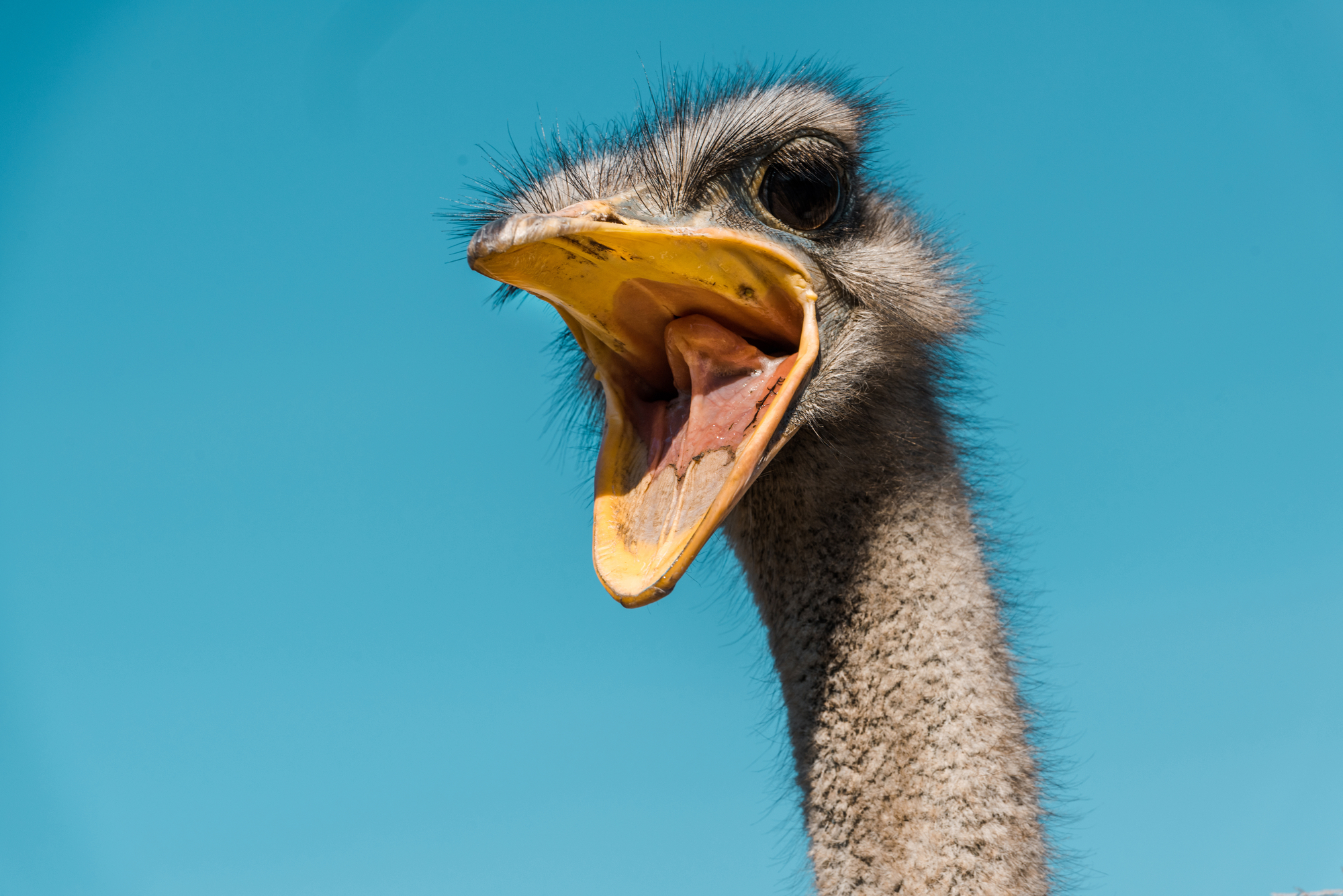

A new discovery might be providing some serious nightmare fuel for those with ornithophobia. While the present-day common ostrich weighs between 230 to 346 pounds (104 to 156 kilograms), an ostrich-like theropod dinosaur named ornithomimosaur could reach the more than 1,700 pounds (800 kg) when it roamed the Earth. And just like the modern-day ostrich, it couldn’t fly.
A study published today in the journal PLOS One details how this dino-bird was able to grow to such an enormous size. Ornithomimosaurs (which means “bird-mimic lizards”) lived during the Late Cretaceous Period, about 100.5 million years ago to 66 million years ago, and they had small heads, long arms, and strong legs.
[Related: This pterosaur ancestor was a tiny, flightless dog-like dinosaur.]
At this time, the Rocky Mountains or Colorado plateau had yet to form and a seaway split the the present-day continent of North America into two landmasses. To the west was Laramidia, which stretched from Mexico up to Alaska. To the east, was Appalachia. Fossils from the eastern region have been a rare find, so this ancient ecosystem is poorly understood. This study describe some new fossils of ornithomimosaur dinosaurs from the Eutaw Formation in discovered recently in current day Mississippi.
The new fossils include foot bones that date back 85 million years ago. These prehistoric claws are helping scientists better understand this period of North American dinosaur evolution. The authors compared the proportions of both sets of fossils and the patterns of growth within the bones, and determined that the fossils likely represent two different species of ornithomimosaurs. One likely belonged to a relatively small species, and one that was very big—coming in at about 1,700 pounds (800 kg) and likely still growing when it died. These findings mean that this particular specimen is among the largest ornithomimosaurs ever known.
[Related: A dinosaur egg bonanza is helping ecologists understand prehistoric parenting.]
In addition to filling in some evolutionary gaps, these fossils show that both giant body sizes and multiple dinosaur species living side-by-side. This is a recurring trend in these dinosaurs across North America and in Asia, Europe, and Africa where ornithomimosaurs fossils have also been found. More study will hopefully explain some of the factors behind the success of both growing big and cohabitating.
“The co-existence of medium- and large-bodied ornithomimosaur taxa during the Late Cretaceous Santonian of North America does not only provide key information on the diversity and distribution of North American ornithomimosaurs from the Appalachian landmass, but it also suggests broader evidence of multiple cohabiting species of ornithomimosaurian dinosaurs in Late Cretaceous ecosystems of Laurasia,” wrote the authors in a press release.
